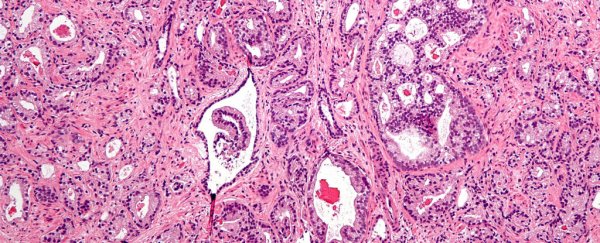Prostate cancer is often tackled by the removal of the prostate gland and some of the surrounding tissue, but the procedure isn't always as accurate as doctors would like it to be, and sometimes too much or too little tissue can be taken out during surgery.
So scientists have developed a new procedure that uses reflected light to spot remaining cancer cells and make the removal process much more precise and effective. The new process has been developed by a team at the University of Texas Southwestern Medical Centre, and involves using a special light reflectance spectroscopy probe to analyse the tissue.
The researchers use the intensity of the light reflected back as an indication of remaining cancer cells left behind after the removal of the prostate gland. In theory, this should avoid tissue being removed unnecessarily, while making sure all traces of the cancer have been removed.
The term "positive surgical margin" is used to refer to undetectable cancer cells (from outside the visible tumour) that are left behind after surgery has finished, but this light reflectance technique should now pick these up.
Having gone through the standard gland removal process with 17 current patients, the research team put its probe into action, reporting that remaining cancer cells were detected with an accuracy of 85 percent.
"This study highlights one of a growing number of technology platforms that aim to improve the outcomes of cancer surgery," said one of the team, Jeffrey Cadeddu. "Further study is required to determine whether such analysis may be used in real-time to improve surgical decision-making and decrease the amount of tissue surgeons need to remove."
Doctors are often restricted in terms of time and the information at their disposal when performing these prostatectomies, but light reflectance could help on both counts.
If proven to be effective on a larger sample of patients, it would help minimise the chance of the cancer returning and thus reduce the need for future treatment, saving money and surgery slots along the way, as well as increasing the chances of a full recovery by the patient.
According to the US National Cancer Institute, prostate cancer is the second most common cancer in men after skin cancer; it's also the second most common cause of cancer-related death in the US after lung cancer. Fortunately, most men don't die from the disease: the 2015 US statistics state that there were around 220,800 new cases of prostate cancer and roughly 27,540 deaths.
The new technique has been published in The Journal of Urology.
